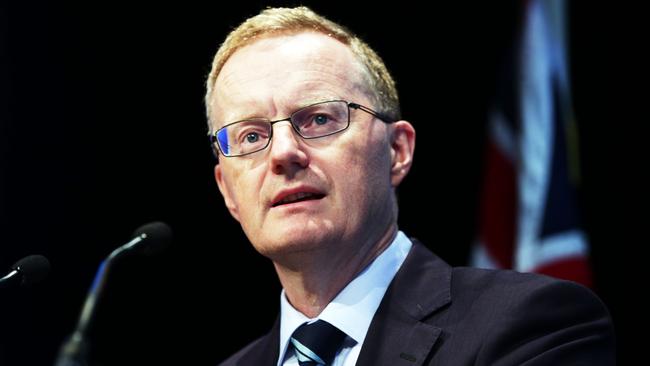Quantitative easing next up from RBA if rate cuts fail: NAB
Australia’s central bank could become the next to embrace quantitative easing, NAB has warned.

Australia’s central bank could become the next to embrace quantitative easing, if interest rate cuts fail to lift inflation and spur on economic growth, a major bank has warned.
National Australia Bank yesterday tipped a reduction in the official cash rate to 1 per cent and surprised markets by suggesting the Reserve Bank may even follow other central banks around the world in pursuing “non-conventional policy measures” such as quantitative easing, or QE.
Such a move would mark a key test for incoming Reserve Bank governor Philip Lowe when he takes charge from Glenn Stevens in September.
The dollar slipped nearly half a US cent to US76.22c in reaction to NAB’s views. The currency has risen 5 per cent against the greenback this year as stronger commodity prices and delays in US interest rate increases have muted the effect of two rate cuts by the RBA.
Major central banks from Europe to the US have pumped trillions of dollars into the financial system in recent years in an effort to spur on growth. QE mostly involves the creation of money through buying government bonds and other financial assets in the hope of encouraging banks to lend more. But critics say the move has had mixed success in Europe and Japan and has ultimately contributed to a surge in asset prices, including stocks, bonds and property.
Any move towards QE would underscore concerns that interest rate cuts become less effective as official cash rates move lower.
“If the RBA has cut to 1 per cent by this time next year as we expect, then we will be having a different debate to what we are having today,” said NAB’s global head of research, Peter Jolly.
Economists at Morgan Stanley, JPMorgan Chase and Macquarie Bank also expect the cash rate to hit 1 per cent next year, but NAB is the first of the nation’s major banks to discuss the use of unconventional monetary policy in Australia as inflation hits record lows.
“We don’t know whether it’s 1 per cent or 0.5 per cent where they stop (cutting),” Mr Jolly said.
“But if they get close to that lower bound (where rate cuts lose effectiveness), and they want to ease further, the RBA will need to consider other means.”
While the RBA still believes interest rate cuts are working, having slashed its official cash rate to a record low of 1.5 per cent last week, officials have previously indicated that rate cuts on their own would lose their effectiveness near 1 per cent.
“Once you get below some certain level of very low interest rates the incremental benefit from lowering them further is quite small,” deputy governor Philip Lowe said at a December 2012 event, in response to a question about when the RBA might consider quantitative easing.
Dr Lowe — who will take the helm at the RBA next month — said: “Somewhere around 1 per cent plus or minus a bit — I think once you get there, other options of unconventional monetary policy become more viable. Until you get there I don’t really see a strong case for doing these other unconventional things.”
NAB’s Mr Jolly said: “Our thinking definitely hinges off Philip Lowe’s comment.
“That’s not to say categorically that QE happens at 1 per cent, but it’s pretty clear that given how far interest rates have declined towards their effective limits, if the economy needs additional stimulus, then we presume that will need to be considered.”
Capital Economics chief economist Paul Dales said: “There are lots of instances of zero and near zero rates in other parts of the world. In theory 1 per cent doesn’t need to be seen as the lower bound.”
And while the RBA could consider using QE if the cash rate hit 1 per cent and more stimulus were required, “there might be a situation where they do a couple of things at the same time”.
But “the RBA have clearly been thinking about this,” he said, pointing to a July discussion from the central bank he dubbed its “emergency playbook”.
He said it was “prudent planning as it learns from the rest of the world to determine what was effective and what did not work to find the combination for the most powerful result”.
Mr Dales said interest rate cuts were not having as much impact as they did in the past, partly because of already high levels of household debt and tighter lending restrictions from regulators.
The prospect of sub-1 per cent rates — and potential QE — would be affected by further delays in the Federal Reserve’s interest rate normalisation.



To join the conversation, please log in. Don't have an account? Register
Join the conversation, you are commenting as Logout